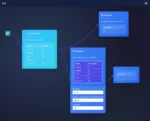
by tyler garrett | May 13, 2025 | Data Processing
In today’s technologically empowered marketplace, data-driven organizations are faced with an unprecedented demand for agility, scalability, and consistency. Managing data pipelines, version control, and efficient release management is not just industry jargon—it’s a necessity for successful digital transformation. Leaders navigating complex infrastructure must strategically approach the delicate balance between rapid innovation and risk mitigation to propel their organizations forward competitively. Harnessing optimized pipeline version control and thorough release management strategies can drastically accelerate your company’s agility, enhance your analytics initiatives, and ensure your teams spend less time troubleshooting and more time innovating. Let’s dive deep into how strategic data engineering practices can streamline pipeline version control, accelerate your data initiatives, and elevate your organization’s competitive edge in the modern era of analytics and innovation.
Why Pipeline Version Control Is Essential for Modern Businesses
Data pipelines—complex workflows dedicated to moving, transforming, and analyzing large volumes of data—have become fundamental components in modern analytics infrastructure. While pipelines empower analytics professionals and decision-makers to gain real-time insights, their complexity requires precise and systematic management.
Without proper version control, data pipelines become increasingly difficult to maintain, troubleshoot, and scale. Modifications to existing logic, upgraded frameworks, data schema changes, and unexpected errors can trigger significant disruptions, causing productivity to stall and analytics projects to veer off track. For example, introducing enhancements such as automated Tableau dashboard images requires meticulous pipeline management to maintain robustness as new functionalities are deployed.
Strategically implemented pipeline version control empowers analytics teams with collaborative tools and industry-standard best practices, allowing seamless collaboration across teams that manage data environments. Maintaining clear lineage, version history, and rollback capabilities significantly reduces downtime and allows faster troubleshooting when problems arise. For scaling data infrastructure—such as introducing real-time dashboards using Streamlit and Kafka—operational efficiency gains made possible by strategic pipeline version control are invaluable.
Enhancing Collaboration and Communication
Modern pipeline engineering encourages communication and collaboration among interdisciplinary teams. Version control frameworks, such as git or dedicated DevOps solutions, offer profound benefits when implemented consistently across data engineering environments. Having version-controlled pipelines ensures that everyone involved—whether engineers, analysts, data scientists, or leadership—is working from a single point of reference.
An exceptional versioning methodology complements your analytics infrastructure, ensuring seamless transitions between development, testing, and production stages. As data engineering initiatives grow more sophisticated and involve complex techniques, such as computational storage or advanced ETL frameworks, aligning your entire team through centralized and consistent version control fosters an efficiency-driven culture.
Building a Robust Release Management Process
Release management is critical for mitigating potential operational disruptions, ensuring pipeline reliability, and sustaining business continuity. The pipeline management release process enables controlled updates to data infrastructure and robust deployments, while minimizing risks associated with errors, downtime, and poor execution.
Establishing a clear procedure around your release management strategy not only preserves integrity across environments but also strengthens overall analytics platform stability. Effective release management involves deliberate planning, automated testing, systematic validation, and centralized oversight to enable continuous integration and deployment workflows—often abbreviated as CI/CD. Implementing comprehensive release management can significantly improve analytics efficacy, influencing advanced initiatives like market trend analysis for demand forecasting.
Automation: The Cornerstone of Effective Release Management
Automation tools designed specifically for pipeline lifecycle management or cloud native data orchestrations drive consistent deployment procedures and reproducible results. Wider implementation of pipeline automation optimizes delivery speeds, reduces human error, and enables technical teams to innovate continuously. This strategic automation process extends its value across sophisticated data projects and innovative environments—with successful use-cases underpinning data observability strategy implementations, vastly improving reliability and trust in organizational insights.
Adopting automated testing, validation steps, and quality assurance standards incorporated into a robust data engineering release management setup dramatically elevates the quality and confidence around your analytics products. Ultimately, streamlined automation and rigorous release management practices help you translate data-driven capabilities into genuine competitive advantages.
Strategic Best Practices for Pipeline Version Control and Release Management
Leveraging strategic best practices ensures robust outcomes and long-lasting pipeline efficiency. First, your team needs clear and unified standards operating under an established system for pipeline version control—such as Git protocols or cloud-native DevOps solutions. These foundations should promote regularly scheduled code reviews, consistent branching strategies, clear documentation standards, and precautionary measures like extensive test environments before deployments.
Consider adopting the proven data engineering paradigms outlined in our article on bi-directional data synchronization patterns, as incorporating advanced synchronization patterns can significantly optimize robustness and performance across your diverse informational landscape.
Continuous Integration and Continuous Delivery (CI/CD)
Embracing effective Continuous Integration and Continuous Delivery (CI/CD) practices within pipeline workflows ensures comprehensive automation, iterative feedback loops, and transparent deployments. A powerful CI/CD pipeline guarantees rigorous testing upfront, rapid mitigation of infrastructure weaknesses or data pipeline issues, and a streamlined approval workflow ahead of production deployment.
Clearly understanding the maturity and complexities of your data infrastructure will also help determine when to choose between differing storage methodologies. Organizations frequently delineate between using data lakes and data warehouses; for decision support, refer to our practical guidelines about choosing a data lake versus a data warehouse.
Strategically developed CI/CD pipelines significantly improve issue detection rates, deployment repeatability, and code reliability. When accompanied by robust infrastructure monitoring tools, these processes become critical to data-driven initiatives’ ongoing success.
Selecting the Right Tools and Solutions for Version Control and Release Management
Evaluating and investing in industry-appropriate tools and solutions forms a vital part of successful release management and pipeline optimization practices. Choices available to organizations include both open-source and commercial products, each option presenting distinct advantages and considerations. Understanding your organization’s specific requirements will help identify optimal tool configuration—this informed tool selection is critical to successful pipeline management and operational deployment.
Teams should thoughtfully evaluate open-source and proprietary options. To facilitate thorough consideration, refer to our detailed blog explaining open-source versus commercial ETL solutions, providing insights that illuminate strengths and trade-offs across vendor ecosystems.
Integration and Scalability Considerations
The selected solutions must flawlessly integrate with your current and future data infrastructure investments. Scalability—a central consideration—ensures that your toolset and platform choices provide future-proof flexibility and adaptability. Whether optimizing transactional analytics or growth-oriented projects such as predictive analytics, forecasting, or analytics at scale in our rapidly evolving technologies, your robust solution stack must prove versatile, scalable, and integrative.
Seek advice from experienced professionals to align solutions properly, ensuring optimized pipeline management strategies compound into competitive advantages. Our experienced technical strategists provide specialized guidance through our data engineering consulting services, enabling your team to navigate today’s complex landscape effectively and ensure sustainable transformation.
Conclusion: Propel Innovation with Robust Version Control and Release Management
Effective pipeline version control and intelligent release management shape how organizations innovate, scale, and compete. It is no longer sufficient for analytics projects to reactively operate their pipeline and infrastructure management. Businesses looking to drive competitive differentiation through innovation-driven analytics must proactively embrace disciplined data engineering audits, structured frameworks, automated deployment practices, and optimized CI/CD.
By empowering your analytics and data engineering operations through comprehensive pipeline frameworks supported with strategic tools and expert practices, organizations gain measurable advantages in performance, reliability, and innovation. Addressing concerns such as data warehousing complexities for those new to the space, our comprehensive beginner’s guide to data warehousing can help foster an informed strategy and optimized version management.
Is your organization ready to redefine modern data management capabilities and empower innovative business outcomes? Now is the moment to optimize pipeline version control and release management effectively.

by tyler garrett | May 13, 2025 | Data Processing
In today’s interconnected landscape, data streams are increasingly the lifeblood of agile organizations. As real-time data fuels everything from supply chain optimization to predictive analytics, ensuring accuracy and reliability through robust input validation strategies is paramount. Businesses can no longer afford the luxury of delayed or inaccurate data; every second counts. Far beyond simple error-checking, real-time validation strategies integrate seamlessly into data streams, enabling immediate corrections and proactive insights. Within competitive industries where speed and accuracy translate directly into profitability, mastering robust real-time input validation is the strategic edge your enterprise needs to stay ahead. Dive deeper as we uncover best practices, innovations, and essential considerations for implementing next-level real-time data validation techniques that strengthen your organization’s data environment from end-to-end, empowering reliable decisions and accelerated performance outcomes.
The Importance of Real-Time Data Validation
Real-time data validation isn’t merely a technical box to check; it’s a strategic necessity in any modern enterprise’s digital toolkit. Data streams are continuously generated via sensors, software applications, IoT devices, and various business intelligence platforms. Without proper validation practices, this influx of data—often voluminous and complex—can turn from an advantage into a liability. Fresh insights require clean data; inaccuracies create cascading downstream issues, resulting in compromised analytics and faulty business decisions.
For instance, leveraging detailed data warehousing consulting services can be immensely beneficial for organizations accumulating large data lakes or warehouses. Establishing sophisticated real-time validation protocols ensures indispensable quality control. Automated input validation methods not only prevent bad data entry into warehouses but boost system performance by eliminating data cleansing delays, a crucial advantage in high-performing analytics environments.
Organizations that embrace these methodologies clearly signal their commitment to data integrity, thereby earning stakeholder confidence and trust. Recently, we’ve observed this trend shaping sectors like inventory management, where instantaneous demand forecasting becomes possible solely due to rigorous data validation processes. We even explored this further in our article about optimizing inventory levels through demand forecasting, emphasizing the elevated efficiency organizations achieve. Thus, real-time data validation directly enhances your business agility, ensuring you remain primed to react insightfully and strategically to emerging opportunities or sudden market shifts.
Building Robust Validation Rules and Business Logic
The foundation of effective real-time input validation is built upon intelligent, robust validation rules and defined business logic. To achieve accurate, actionable insights, validation systems must go beyond simplistic methods such as merely checking data types or ranges. Instead, validation rules require deep integration with business logic frameworks, defining precisely what constitutes accurate and meaningful information.
Construct clear, precise conditional rules that enable identifying anomalies early in the data lifecycle. Define valid data ranges, expected formats, relationships between fields, and integrated referential integrity checks aligned with your organization’s unique business scenarios. Data engineering teams must understand the nuances of your business processes, aligning validation rules to strategic objectives. Utilizing frameworks that support complex validation scenarios ensures the precision and depth required.
Consider data engineers as strategic partners shaping the precision of your data systems—precisely why we’ve described the essential duties and skillsets in our article on the role data engineers play in artificial intelligence and data-driven systems. Their expertise allows enterprises to build validation rulesets that anticipate complexity rather than react to errors, making validation more predictive than reactive.
Performance Optimization with Efficient Filtering Techniques
Real-time streams demand validation strategies that balance accuracy with performance. One advanced technique involves leveraging database methods for efficient filtering. Leveraging SQL clauses strategically enables immediate detection and filtering of invalid or unwanted inputs before they affect downstream data models.
An optimal strategy includes mastering the SQL WHERE clause to achieve greater precision and speed in filtering incoming data. Our extensive guide titled Mastering the SQL WHERE Clause—Filtering Data with Precision lays a foundation for validating streamed input data effectively. Additionally, clearly understanding SQL’s UNION and UNION ALL commands can optimize how you handle multiple simultaneous data streams, explained thoroughly in our coverage on the difference between UNION and UNION ALL in SQL.
By semi-structuring your validation logic directly into database processing rules, you can manage high-volume streaming workloads with minimal latency. With the proper infrastructure, such as employing recursive patterns with materialized views—outlined in detail within our recursive materialized view analytics article—businesses can filter streaming data efficiently. These advanced filtering and validation capabilities translate directly into streamlined operational analytics processes and greater profitability.
Managing Privacy, Security, and Access Control Through Validation
Real-time validation isn’t exclusively about high-quality analytics—it’s equally about security, compliance, and privacy. When validating input data streams, businesses must maintain strict access control protocols to comply with data governance policies, privacy regulations, and security best practices.
In SQL-driven platforms, standardizing privilege management is a critical avenue to secure datasets. Validation initiatives could integrate measures as covered in our comprehensive guide on access management titled Revoking Privileges: Managing Access Control in SQL. Alongside robust input validation, proper privilege revocation and controlled access serve as additional security layers to guard sensitive business insights effectively.
Premium data validation pipelines incorporate advanced security checks to flag suspicious and unauthorized integrations, preventing vulnerabilities at their source. This intertwining of validation and privacy principles ensures enterprises can confidently leverage data streams without compromising sensitive or regulated information. Organizations must continuously refine these practices for ongoing compliance, security, and reliability.
Leveraging Semantic Technologies for Data Integration and Validation Consistency
As your organization’s data ecosystem matures and complexity grows, data from diverse sources magnifies the difficulty of real-time validation. An advanced solution lies in incorporating semantic technology into your validation architecture, particularly through ontology-driven data integration. Employing semantic approaches ensures consistency, interoperability, and broader flexibility across evolving data structures and formats.
A systematic ontology-driven approach, thoroughly explored in our article on semantic approaches to data unification, assures consistent validation criteria across enterprise applications. Leveraging well-designed ontologies ensures not only the consistency of validation, but also its adaptability, scalability, and agility within dynamic scenarios brought by new data sources.
Validations guided by semantic frameworks provide a reliable mechanism for ensuring interoperability across applications and systems. Such contextual foundations ensure your validation remains meaningful and strategically valuable—even while your analytical depth and complexity grow—delivering ongoing validation excellence and enriching your organization’s insights.
Positioning Your Organization for the Future of Data Engineering and Validation
Looking forward, it’s clear the competitive landscape requires a shift toward more strategic and scalable data engineering and validation methodologies. As data volume and velocity accelerate, organizations equipped with robust real-time validation strategies differentiate themselves from competitors.
Ensuring your enterprise keeps pace involves strategic hiring of talented data engineers who excel at deepening your validation capabilities, a topic we’ve comprehensively outlined in the blog post What’s It Like Hiring Engineers Focused on Improving Your Data Environment? Additionally, integrating cutting-edge advanced data validation trends, as we’ve detailed in our forward-looking feature on data engineering profitability trends in 2025, positions your organization strategically ahead of the curve.
As validation strategies become increasingly intelligent and powerful alongside AI-driven tools, enterprise leaders must proactively embrace foundational validation infrastructure today. The validation choices made now shape your organizational agility and data-driven success tomorrow.
Superior real-time data validation bears clear strategic dividends: unparalleled accuracy, enhanced analytics insight, stronger security and compliance, increased customer trust, and market agility. Invest thoughtfully now; prepare effectively for tomorrow.

by tyler garrett | May 13, 2025 | Data Processing
Navigating today’s complex and data-rich technology environment requires well-structured, flexible, and efficient data management systems. For modern businesses—those that rely on accurate, timely, and insightful analytics—the effective implementation of pipeline hierarchies isn’t just insightful; it’s essential. Especially crucial in our fast-paced digital economy, parent-child pipeline hierarchies offer structured frameworks that enable scalability, maintainability, and greater data transparency. With such a setup, software decision-makers and data leaders can effortlessly triangulate their resources, streamline automation, and guarantee the integrity of their data transformations. In this blog, we will walk through the strategic advantages, best practices, common challenges, and implementation strategies of parent-child pipeline hierarchies that’ll equip your organization with clarity and control over your data workflows.
What is a Parent-Child Pipeline Hierarchy?
Before diving into best practices or implementation tactics, it’s essential to understand what a parent-child pipeline hierarchy entails. Simply put, this structure organizes pipelines into a logical, interconnected workflow, where parent pipelines oversee and initiate child pipelines, thus creating clear dependencies and manageable hierarchies of operations. Within these pipeline configurations, each component—parent or child—bears specific responsibilities, handling tasks systematically and ensuring smooth data operations.
Take, for example, how software consultants at Dev3lop structure projects leveraging tools such as Tableau and Google BigQuery. Crucially, a parent pipeline orchestrates overall workflows, initiating its child pipelines who might be responsible for specific tasks: data extraction, transformation, loading, data quality checks, or even advanced machine learning workflows. By clearly structuring tasks like data transformations using idempotent data transformations, teams gain the substantial advantage of easily reprocessing or recalibrating workflows when necessary.
Furthermore, these hierarchies are an ideal fit in environments incorporating advanced analytics methodologies and machine learning techniques. For instance, sophisticated processes like parameter-efficient transfer learning for time series forecasting require impeccable structure management, and the parent-child hierarchy approach provides precisely that: clarity and manageability.
Strategic Advantages of Utilizing Hierarchical Pipelines
The strategic value behind using parent-child pipeline hierarchies in your data engineering and analytics projects cannot be overstated. Foremost among these advantages is enhanced data governance and transparency. By maintaining clearly outlined dependencies and hierarchies, stakeholders ranging from engineers to executives can instantly understand how various processes interact, dramatically improving decision-making, accountability, and reporting.
For teams involving complex technologies, employing hierarchical pipelines facilitates clear segmentation of tasks. This segmentation simplifies not only troubleshooting but also strategic planning for scalability, agility, and responsiveness. Imagine, for instance, the ability to effortlessly scale data workloads using approximate query processing for interactive data exploration. Hierarchical organization allows you to isolate computationally intensive workloads, ensuring optimized query planning without sacrificing overall performance.
Moreover, an added strategic advantage occurs through systematic error handling mechanisms. When errors arise in specific pipelines, parent-child relationships ensure that failure states or notifications instigated from a child effectively bubble up to parent pipelines overseeing the overall operation. Quick identification and response to data issues increase trust among users and maintain analytical accuracy. Ultimately, this can enhance user adoption by building more intuitive, reliable, and high performing analytics solutions, such as those outlined clearly on our advanced Tableau consulting services page.
Implementation Best Practices
While the hierarchical parent-child structure inherently simplifies complex processes, there are still essential considerations to achieve fully optimized workflows. Foremost among best practices is carefully structuring pipeline tasks according to distinct responsibilities. Effective task grouping guarantees efficient administration, monitoring, and troubleshooting from a holistic data governance perspective.
A powerful implementation best practice involves leveraging pipeline automation tools. Automation diminishes human error, boosts operational efficiency, and provides clear visibility to multiple stakeholders. Ensuring systematically automated workflows reduces dependency on manual triggers and encourages precise timing and consistency. For tales of successful workflow solutions revolving around consistent data management, take the implementation shared in our article New Colibri Google Analytics Tableau Dashboard, highlighting automation and intuitive analytics interfaces.
Additionally, it’s fundamental to establish proper access controls and data governance policies. Data security and integrity risk mitigation demand strategic integration within pipeline design from the outset. Clearly regulating access reduces misinformation risks, maintains compliance, and ensures strong data lineage traceability, essential for optimal auditing and compliance protocols. In this respect, providing clearly defined routes through parent-child pipeline structures enables significant operational insight and control.
Common Challenges and How to Overcome Them
While parent-child pipeline hierarchies offer significant benefits, implementing such a robust structure is not without challenges. The biggest potential pitfalls often occur due to poorly defined workflows, lack of clear documentation, or overly complex structural setups. Often times, data engineering teams underestimate the architectural complexity at scale, as discussed extensively in our analysis of why most data engineers struggle with architecting for scale.
To specifically address these issues, organizations need clearly documented guidelines and technical specifications. Additionally, leveraging visual documentation approaches significantly aids collaborative understanding. Tools and techniques, such as clearly established process documentation, coupled with highly intuitive visualization tools, offer invaluable guidance in structuring complex workflows transparently. For insights into creating such interactive documentation and visual representation, review the benefits explained comprehensively in our article on interactive data visualization.
Another frequent challenge involves error management and troubleshooting. An inadvertent failure of one child pipeline should not cascade through the hierarchy if your implementation is robust. To mitigate this, pipelines should incorporate error-handling components that isolate and thread potential exceptions without leading to widespread disruption. Furthermore, add detailed logging mechanisms that facilitate pinpointing exact points of error, allowing quick and laser-focused troubleshooting.
Real-World Use Cases of Parent-Child Pipeline Hierarchies
Real-world implementations abound in proving the power of well-executed pipeline hierarchies. For example, in digital marketing analytics workflows, businesses frequently require iterative data processes across multiple platforms. Consider our approach shared in sending LinkedIn data to Google Big Query using Node.js, where structured parent-child pipeline methodologies notably simplified platform-specific data integration tasks, workload distribution, and ultimately business intelligence analyses.
In the realm of machine learning and advanced analytics, process complexity multiplies exponentially. Therefore, the precise hierarchy approach becomes essential. Specifically, hierarchical pipelines allow teams to incorporate iterative machine learning algorithms, process adjustments, or robust retraining into cohesive workflows. Ensuring accuracy, efficiency, and rapid delivery becomes more achievable in hierarchical setups. Such implementations are critical not only in the forecasting domain (as previously mentioned on Parameter-efficient forecasting), but across diverse industry verticals in obtaining streamlined analytical capabilities, increased business agility, and quicker strategic decision-making.
Additionally, industries dealing in compliance-heavy data, such as fintech, healthcare, and insurance, find parent-child hierarchies indispensable. Rigorous oversight, clear audit paths, conducive data integration—clear pipeline hierarchies play an invaluable role for enterprise governance standards.
Getting Started with a Hierarchical Pipeline Implementation
If you’ve determined your organization’s workflows could significantly benefit from structured, clear, and robust data pipeline hierarchies, a great first step is documenting your existing processes clearly. Evaluate areas prone to repetitive processes, potential errors, time-consuming tasks, and places where workflows seem unclear or unmanaged.
Next, define clear workflows through interactive diagrams or visualizations, then translate them into larger parent-child hierarchical frameworks. It may require foundational knowledge around SQL queries and critical databases, especially when establishing initial data load processes—our guide to getting started with the SELECT statement in SQL can bolster these foundational skills.
Finally, selecting an experienced partner to guide implementation becomes instrumental. Software consulting teams, such as Dev3lop, offer robust experience across advanced data analytics strategies, pipeline management, and tableau consulting. Leveraging professional expertise ensures smooth adoption, enhances best practice adherence, and maximizes return on technological investments.
By adopting structured parent-child pipeline hierarchies, your organization can significantly progress toward clarity, efficiency, and scalable analytical capabilities.

by tyler garrett | May 13, 2025 | Data Processing
In today’s landscape, data is more than just bytes flowing through your organization; it’s the lifeblood fueling real-time decisions, responsive analytics, and agile business strategies. As the volume, velocity, and variety of data increase exponentially, mastering how you join stream-based event flows with static or slowly changing reference tables becomes essential. Whether you are looking to enrich real-time user interactions or augment streaming sensor data with contextual information, implementing efficient stream-table join patterns can offer a competitive advantage, enabling data-driven insights at scale. With targeted implementation patterns, organizations can ensure seamless integration, reduced latency, and vastly improved business outcomes across analytics, user experience, and innovation initiatives.
Understanding the Basics: Stream vs. Table
Before diving into stream-table join methodologies, it’s crucial to clarify the fundamental distinctions between streams and tables within modern data ecosystems. A “stream” is an unbounded, continuously updating sequence of data events, typically reflecting real-time statuses or actions—user interactions, IoT sensor readings, financial market events, or social media updates. Streams, by their nature, highlight change and movement in data, offering the potential for real-time analytics and near-instantaneous decision-making.
On the other hand, a “table” usually represents bounded or slowly updating, structured reference data. Examples include customer profiles stored in databases, static product catalogs, pricing guidelines, or structured lookup tables used for transforming or enriching stream data. Tables provide context, enabling meaningful interpretation and enhanced insights from the rapidly moving streams. Implementing stream-table joins thus entails intelligently combining these evolving event streams with managed and controlled data sources, presenting a wealth of opportunities and challenges for technical leaders.
An effective understanding of how to leverage both streams’ agility and tables’ reliability provides organizations valuable insights. Data leaders and teams involved in modern analytics must familiarize themselves with foundational data architecture concepts, such as those summarized in our detailed guide on data architecture patterns for microservices.
Common Patterns for Implementing Stream-Table Joins
Simple Lookup Joins
Simple lookup joins constitute one of the most prevalent and practical stream-table integration patterns. Here, events in the stream are enriched by simple lookups in a static or rarely updated table. For example, financial transaction streams can easily reference user-profile tables to append customer demographics. Implementing a simple lookup join is straightforward and usually performed using in-memory caching or efficient database queries during execution.
While simplicity can be tempting, decision makers should ensure that lookup joins don’t inadvertently degrade system response times or overwhelm the database infrastructure. Optimization techniques like read-through caching or employing indexing strategies become crucial to ensuring long-term sustainability and system performance. For a detailed exploration of optimizing query efficiency, visit our comprehensive article on query mesh optimization.
Time-Windowed Joins
Time-windowed joins are essential when precise temporal consistency between stream events and table entries is crucial. For example, online marketing systems might match ad impressions with purchase data over specified periods. These joins are typically executed over defined event-time or processing-time windows, thus narrowing the scope to relevant and timely information.
The precision provided by time windows ensures accurate and contextually relevant outcomes, making it particularly valuable in analytics and reporting use cases. Teams optimizing dashboards or reports in platforms like Power BI should also understand how data becomes available and is refreshed. Learn more about optimized data access patterns in our guide on Import vs. Direct Query in Power BI.
Incremental & Trigger-Based Joins
Incremental and trigger-based joins extend beyond time windows by enriching streams based on incremental updates or specific trigger events. Often implemented through change data capture (CDC) mechanisms, update-triggered joins optimize resource utilization by preventing unnecessary repetitive queries. Incremental joins can intelligently update the table enrichment process whenever source data changes, providing greater efficiency and responsiveness.
For organizations leveraging DevOps methodologies, integrating incremental joins aligns easily with agile development cycles and automated deployments. Our detailed insights into building a streamlined pipeline, available in the article CI/CD pipeline comprehensive guide, addresses the importance of structuring agile shifts within data contexts.
Technical Strategies for Optimizing Stream-Table Joins
Effective Caching and Indexing Strategies
Given the latency-sensitive nature of stream processing, smart use of caching and proper database indexing strategies can dramatically improve join performance. Leveraging distributed in-memory caches like Redis or Apache Ignite ensures rapid access and reduces redundant database calls. Additionally, indexing crucial columns in reference tables allows efficient lookups and minimizes latency impacts.
By ensuring faster lookups through efficient indexing and caching, organizations can deliver more immediate and actionable insights to users and stakeholders. Decision makers seeking this kind of efficient technical implementation strategy should explore a broader discussion about indexing and access controls detailed in our comprehensive article on managing access control in SQL.
Partitioning Streams and Tables
Another strategy for enhancing performance in high-volume environments entails the logical or physical partitioning of streams and tables. Partitioning separates data across nodes based on specified keys (e.g., geographical region, customer segments) for improved parallel processing. Distributed stream processing platforms like Apache Kafka Streams, Apache Flink, and Apache Spark Streaming provide built-in support for partitioning, facilitating efficiency improvements in stream-table joins at scale.
For technical leaders grappling with real-time data processing demands, partitioning reduces data bottlenecks, supports load distribution, and significantly enhances throughput—all essential for maintaining service quality and real-time responsiveness in modern applications.
Advanced Use Cases and Tools to Consider
Real-Time Analytics and Contextual User Experiences
Stream-table joins underpin advanced real-time analytics and contextually enriched user experiences. Industries like retail, e-commerce, media, finance, and IoT rely heavily on stream-table joins to integrate real-time data with contextual profiles, product catalogs, and historical transaction histories. Advanced platforms and tools, along with machine learning techniques such as those demonstrated via our tutorial Python for part-of-speech tagging using web scraping, exponentially increase the richness and quality of user or business intelligence contexts.
Additionally, combining stream-table joins with modern analytics platforms like Tableau allows immediate results to be visualized effectively, enabling faster strategic decisions. Quickly segmenting event data according to time units and analyzing user journey statistics becomes effortless through methods detailed in our concise tutorial on creating date buckets in Tableau.
Automation and Streamlining with DevOps Integration
Integrating stream-table join systems into DevOps pipelines enables continuous improvement, agile deployment, and swift adaptation to changing business requirements. By including automatic testing, deployment, and rollback capabilities, data-intensive applications gain ease-of-use, security, and stability benefits. Learn more about automation’s role in streamlining technology projects in our article on introduction to DevOps automation strategies.
Organizations seeking streamlined operations should also explore Node.js as a robust technology specifically suited to agile, performance-conscious implementations—our company’s expertise can help with any node.js integration through our professional Node.js consulting services.
Conclusion: Future-Proof Your Data Strategy
Mastering stream-table joins establishes a solid foundation for leveraging data at scale, directly influencing your organization’s ability to innovate, adapt, and succeed. From fundamental techniques like simple lookups to partitioning strategies and automation integration within DevOps practices, selecting the right patterns, tools, and best practices empowers your data strategies today and in the future.
Treat your stream-table join implementations as strategic investments, and your business will capitalize on faster insights, enhanced decision accuracy, and differentiated user experiences. Embrace these patterns today and future-proof your organization’s data capabilities and analytics resilience.

by tyler garrett | May 13, 2025 | Data Processing
In today’s hyper-connected digital landscape, every piece of data tells a story—but what about the story behind your data? Context-aware data processing, driven by environmental metadata, gives businesses the power to transform raw data points into meaningful, actionable insights. By understanding the circumstances, location, and conditions in which data is generated and utilized, organizations can unlock far greater potential from their analytics initiatives. At our software consulting consultancy, we recognize the strategic value of leveraging environmental metadata to enhance decision-making capabilities. In this guide, we unpack how context-aware data processing can redefine the future of your data-driven strategies, offering clarity and competitive advantage in an increasingly complex technological ecosystem.
Understanding Context-Aware Data Processing: Beyond Raw Data
Businesses often have vast amounts of raw data stored across various platforms, yet many struggle to interpret or leverage this information meaningfully. Traditional data processing involves cleaning, structuring, and aggregating—but often overlooks critical environmental metadata. Environmental metadata refers to contextual information around data generation, like device details, network properties, geographic location, or operational context. Context-aware data processing integrates these environmental factors into analytical frameworks, enriching insights and enabling competitive strategies. For instance, knowing the exact geographic context your customers access your digital solutions from may drastically alter your marketing deployment or functionality decisions. To better understand processing methods and architectural choices involved, read our detailed article about isomorphic data processing, which explains logic consistency across environments.
By capturing and utilizing environmental metadata, enterprises move beyond a one-dimensional approach, diving deeper into nuanced analytics and more precise decision-making processes. This alignment between environmental metadata and strategic analytics provides insights that can drastically reduce inefficiencies. In fact, we have experienced firsthand how companies in burgeoning tech hubs are enhancing efficiencies; we share some specific practical applications in our study of Austin-based companies using advanced data analytics. Context-awareness positions your business to anticipate changes rather than merely react to them, positioning you strongly ahead of competitors not leveraging environmental metadata.
The Benefits of Leveraging Environmental Metadata in Data Processing
Enabling Enhanced Real-Time Decision Making
Context-aware data processing is particularly significant in situations requiring rapid decision-making. Integrating environmental metadata, such as real-time geolocation or user device context, enables immediate analytics-driven responses. Imagine an eCommerce retailer adjusting targeted promotions dynamically by interpreting customer location metadata or driving real-time advertising based on geographic traffic data. This immediate responsiveness grants a direct competitive advantage, enabling businesses to seize market opportunities as soon as they emerge.
A sophisticated and optimized ETL (extract-transform-load) pipeline is essential to maintain these real-time processing requirements. For practical strategies in improving ETL performance, review our comprehensive guide to improving your ETL processes. By mastering these critical techniques, your context-aware data processing workflows can achieve lower latency, reduced response time, and increased reliability.
Ensuring Data Consistency through Contextual Integrity
Consistency and data reliability are hallmarks of successful analytics projects. Including environmental metadata can guarantee the integrity and provenance of critical business intelligence. Contextual data processing ensures accuracy by delivering clear documentation of context, traceability, and immutable audit trails. We discussed the relevance and implementation of these secure, immutable strategies in our recent exploration of immutable data architectures. Understanding environmental metadata alongside immutable frameworks offers decision-makers the confidence that their critical analytics reports depicted the actual environment of data origins and transformations.
Implementing Context-Aware Data Processing: Practical Steps
Establishing Thorough and Consistent Metadata Capture
The initial step towards building a context-aware data processing pipeline revolves around designing thorough, standardized procedures for metadata capture. Organizations must identify all critical environmental context aspects relevant to their analytical needs. Detailing explicitly how and where environmental metadata will be gathered, stored, and governed is critical. This metadata can range from simple details like timestamps or equipment information in manufacturing plants, device configuration details in software analytics, or network attributes within IT operations.
To ensure accurate metadata collection, teams must establish clear standards, training, and database designs, governed by enforced access controls. Understanding the principles of proper database governance and access privileges is fundamental; we share best practices in our guide to granting privileges and permissions in SQL. Investing resources upfront in metadata accuracy and consistency provides tremendous clarity, reducing long-term complexity and simplifying future analytical efforts.
Embedding Context Metadata in Your Data Models
Once environmental metadata has been consistently collected and structured, embedding it directly into your analytics pipeline, data models, and business intelligence solutions becomes crucial. Embedding metadata simplifies data discovery and unlocks exploratory analytics previously unachievable by traditional keyword-driven reporting. With modern business intelligence tools like Microsoft Power BI, analyzing and visualizing these advanced metadata insights can transform your analytics outcomes. Partnering with specialized consultants can significantly streamline your embedding process; explore our expert services through our dedicated Power BI consulting services.
By enriching data models with contextual intelligence, semantic embeddings can significantly improve your organization’s analytics capabilities beyond simple keyword matches. For strategic detail on leveraging these techniques, read our specialized article on semantic embeddings for business intelligence. Context-enriched data models deliver strategic differentiation, heightened analytical capabilities, and stronger decision-making frameworks.
The Role of Human-Centered Design in Context-Aware Data Analytics
While technology integration and data architecture are critical elements, organizations must retain a human-centric orientation that prioritizes user experience and practical application. Effective deployment of context-aware analytics solutions involves incorporating environmental metadata specifically to enhance the usability and accessibility of data products for stakeholders. Our team firmly believes the analytical experience must be built around the humans interacting with it—not around databases or algorithms alone. For a comprehensive review, read more about our position on human-centered design in data analytics.
User interaction context—such as platform preference, like choosing between Mac vs Windows for JavaScript development—also significantly impacts analytics product adoption and performance. Understanding environmental context factors plays a guiding role in holistic solution designs that gracefully meet human expectations and business requirements. Aligning your context-aware analytics frameworks directly with the strategic priorities and user preferences involved will ensure superior outcomes and adoption rates.
Bringing Context-Aware Data Analytics Solutions into Production
Successfully delivering context-aware analytics solutions requires a validated data strategy, robust architecture planning, and user-centered designs. Our consultancy leverages agile methodologies coupled with advanced development and BI capabilities to accelerate production deployment. One recent demonstration of context-driven analytics deployment is our available template, the Colibri Google Analytics Tableau dashboard, incorporating contextual website metrics into instantly actionable analytics.
Implementation strategies should also prioritize foundational skills like mastering SQL basics. Check out our introductory tutorial, Getting started with SELECT statements in SQL, ensuring optimal querying performance and cross-platform context-awareness. With thorough documentation and efficient cross-team collaboration, your context-aware data analytics initiatives can become achievable, actionable, and ultimately transformational for your organization.
Unlock Business Potential with Your Contextual Advantage
Incorporating environmental metadata meaningfully within your data analytics process is far from an innovation luxury—it’s an essential strategy for differentiation and competitive agility. Adopting context-aware data strategies not only enriches reporting accuracy but fundamentally reshapes decision-making abilities. As environmental factors continue becoming critical data points, organizations adopting a context-led strategy are destined for improved efficiency, better insights, and transformative outcomes. Are you prepared to fully embrace context-aware data innovation? The power of context is waiting—unlock it today.

by tyler garrett | May 13, 2025 | Data Processing
The growth of real-time analytics and big data processing brings both tremendous business opportunities and daunting technical dilemmas. Organizations seeking real-time decision-making capabilities through rapidly flowing data streams stand at a crucial junction: choosing between aligning their windowing strategies to event occurrence (source-aligned) or to the processing clock (processing-time). As trusted data and analytics consultants, we’ve guided organizations—from those exploring the transformative impact of emerging tech and blockchain’s potential impact on the data industry to clients leveraging semantic models through ontology-driven data integration—in selecting solutions tailored to their unique business contexts. In this guide, we’ll clearly outline the key tradeoffs, helping you grasp the nuances of source-aligned and processing-time windowing practices, and ultimately empower more strategic, informed technology investments.
Understanding the Basics: Source-Aligned and Processing-Time Windows Explained
Windowing mechanisms segment continuous data streams into manageable groups for aggregation and computation. To comprehend tradeoffs, we first need clear definitions of the two main paradigms: source-aligned windows (also called event-time windows) and processing-time windows.
Source-Aligned Windowing (Event-Time)
The source-aligned window strategy relies on timestamps emitted at data origin, accurately representing when the event occurred rather than when it was processed. This approach ensures events are grouped consistently regardless of the latency or delays in sending and processing. An event-time focused strategy supports datasets with timestamps, offering precise historical analytics and audit trails. It’s particularly valuable when dealing with out-of-order or delayed data and maintaining chronological accuracy is vital.
As event-time windows group data logically according to business-critical timestamps, they are indispensable for markets that crave high-precision historical analysis, such as healthcare and construction project management, where data-driven decisions are mission-critical. For instance, businesses adopting standardized APIs like the Procore API (read more at our Procore API consulting services), require timestamp accuracy for effective project tracking and workflow management.
Processing-Time Windowing
Processing-time windowing, by contrast, incorporates time slots based purely on the system’s internal clock at processing. This model simplifies window management because it inherently aligns with real-time processing workflow and execution cycles. However, this simplicity comes with caveats: event ordering may get disrupted, and detailed historical accuracy might suffer when delays or interruptions occur in streaming.
Processing-time strategies excel in situations where simplicity, speed, and low-latency computations trump absolute historical precision. Organizations needing quick turnaround results or alerts often find processing-time windows adequate and efficient for their requirements.
Evaluating Tradeoffs: Latency, Complexity, and Data Valuation
Organizations leveraging data analytics for innovation should thoroughly weigh these options according to specific operational imperatives. Three key factors—latency & responsiveness, implementation complexity, and the inherent value placed on data accuracy—should guide these strategic choices.
Latency and Real-Time Responsiveness Considerations
Source-aligned windowing is focused on correctness; the system must wait for late events, potentially increasing latency. This approach ensures comprehensive analytical accuracy but can be unsuitable for operational scenarios requiring immediate reaction, like real-time anomaly detection in cybersecurity or edge analytics in IoT.
In contrast, processing-time strategies provide extremely low latency and rapid decisions—perfect for companies prioritizing immediate reactions or to surface timely alerts. Yet, attention must be given to the caveat that events arriving late may be incorrectly assigned, distorting insights.
Complexity of Implementation and Maintenance
Event-time is inherently complex, depending heavily upon the correctness of timestamp assignments, data integrity, and infrastructure vital to maintaining aligned ordering. Robust ingestion systems, explicitly managed late-event handling, and sophisticated window closing mechanisms often come at higher resource demands and complexity.
Processing-time windows require less complexity, infrastructure dependency, and explicit event-management overhead. They simplify implementation logic and reduce ongoing system maintenance expenses. Businesses embracing declarative data transformation can leverage this simplicity for faster development cycles and reduced operational difficultly, a boon for agile innovation teams.
Valuation of Data Accuracy and Completeness
Businesses operating in compliance-driven environments or sectors like healthcare—such as highlighted by how data analytics is transforming Austin’s healthcare industry—need stringent timestamp accuracy and historical completeness. For them, source-aligned windowing isn’t optional; it’s mandatory.
If absolute historical precision is less critical—say, streaming user interaction data for real-time user analytics sessions or behavior insights—processing-time windows can sufficiently serve these use cases, providing robust near-instant computation outcomes at reduced complexity.
Use Cases and Strategic Considerations
Strategically evaluating windowing mechanisms includes reviewing practical examples across industries to better grasp operational implications.
Strong Event-Time Use Cases
In data auditing use cases, like finance transaction accounting or supply chain traceability, accuracy and completeness trump immediacy. Additionally, industries with regulatory compliance requirements or immutable data warehousing practices place significant importance on historical fidelity and accuracy, enabling source-aligned windows as their preferred approach.
Likewise, organizations deeply integrating structured data sources—leveraging sophisticated semantic integration and ontology-driven applications—effortlessly maintain data accuracy, traceability, and completeness. Relationships within semantic models benefit from accurate event correlation provided by event-time windowing.
Strong Processing-Time Use Cases
Applications in digital marketing analytics, alerting, fast-response monitoring scenarios (like IoT telemetry), user behavior-specific data (interaction, UI analytics flows), and operational efficiency insights prefer processing-time windowing. Companies requiring fast-paced iterations, instant visibility, and responsiveness will generally lean toward processing-based solutions, accepting limited historical detail in exchange for rapid actionable insights.
Importantly, organizations cultivating data innovation cultures through rapid experimentation, user-focused analytics iteration, or design-driven analytics capabilities for creating intuitive user experiences (read more on the art of tracing dashboards using Figma and PowerBI) will enjoy great advantages from the streamlined nature of processing-time window frameworks.
Best Practices for Selecting Windowing Strategy
To successfully choose between source-aligned and processing-time windowing, businesses must foster a rigorous analysis and evaluation process.
Start consciously with business requirements: outline your organization’s explicit performance objectives, regulatory necessities, or user experience demands. Next, consider data characteristics: if event ordering, timeliness, and accuracy are crucial for downstream workflows (like financial reconciliation workflows or patient medical histories), source-aligned windows present obvious alignment. Conversely, real-time decision-making, quick response actions, or data streams without strict temporal accuracy demands align seamlessly with processing-time.
Strategic sessions focused on data management and analytics strategies, such as facilitations offered through working sessions to reduce miscommunication in analytics projects, facilitate stakeholder agreements and technical clarity.
Continuous Learning and Technology Adoption as Strategic Advantage
The technological landscape and best practices change continuously. A pragmatic recommendation to organizations pursuing data-driven competitive advantage underscores the importance of continuous learning. Engage regularly with industry experts, consultants, or data specialists in personalized consultations (like offered via learning from experts in 1on1 sessions to improve adoption) to stay updated with advancements around event-driven architectures, windowing optimizations, and stream analytics tools.
Mastering stream analytics techniques and windowing tradeoffs positions your organization to innovatively leverage technologies as strategic differentiators, driving business transformation, inspiring innovation cultures, and enhancing your competitive advantage within today’s dynamic digital economy.
Conclusion: Strategic Windowing is Key to Analytics Excellence
Both windowing strategies—source-aligned and processing-time—offer compelling merits fitted to specialized indications and goals. Successful strategic decisions around event-time or processing-time window frameworks ultimately hinge on understanding your organization’s needs, data valuations, response latency tolerances, and architectural complexities. Carefully evaluating and deliberately aligning windowing strategy advancements represents a solid investment in your analytics maturity and future innovation effectiveness.






























